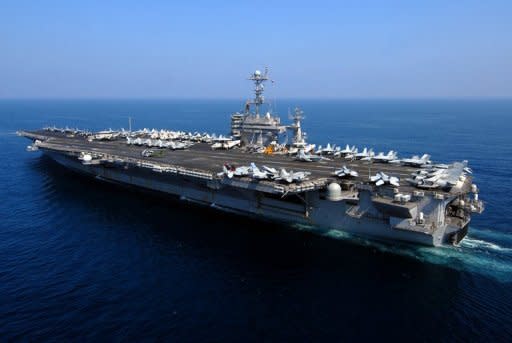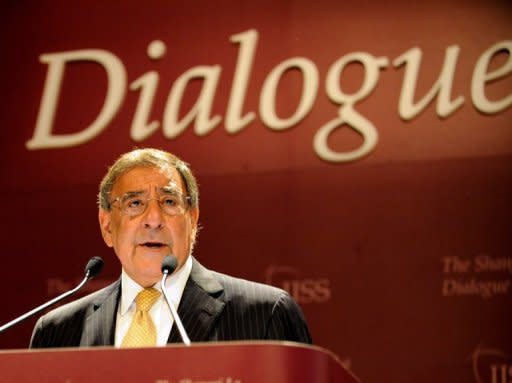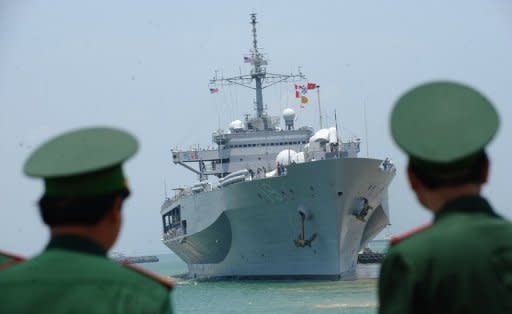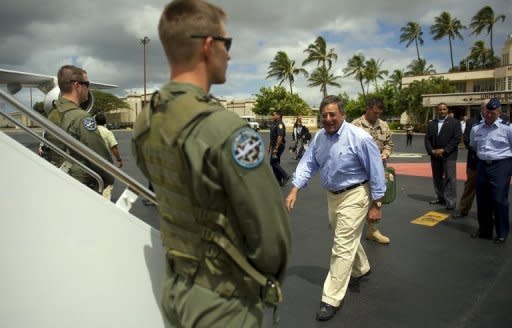US to shift most of naval fleet to Pacific by 2020
The United States will shift the majority of its naval fleet to the Pacific by 2020 as part of a new strategic focus on Asia, Pentagon chief Leon Panetta told a summit in Singapore. The decision to deploy more ships to the Pacific Ocean, along with expanding a network of military partnerships, was part of a "steady, deliberate" effort to bolster the US role in an area deemed vital to America's future, he said on Saturday. And he insisted the switch in strategy was not a challenge to China, saying it was compatible with the development and growth of the fast-growing Asian power. Panetta said "by 2020, the Navy will re-posture its forces from today's roughly 50/50 percent split between the Pacific and the Atlantic to about a 60/40 split between those oceans. "That will include six aircraft carriers in this region, a majority of our cruisers, destroyers, littoral combat ships, and submarines." The US Navy currently has a fleet of 285 ships, with about half of those vessels deployed or assigned to the Pacific. Although the total size of the overall fleet may decline in coming years depending on budget pressures, Pentagon officials said the number of naval ships in the Pacific would rise in absolute terms. The United States also planned to increase the number of military exercises in the Pacific and to conduct more port visits over a wider area extending to the Indian Ocean. Panetta was speaking to mainly Asian defence officials and officers from 27 countries at the Shangri-La Dialogue, a summit organised by the London-based International Institute for Strategic Studies. The speech appeared designed to reassure allies worried about Beijing's more assertive stance in the South China Sea that Washington will back its much-publicised "pivot" to Asia with concrete action. Panetta said budget woes in Washington would not affect the plan to tilt towards Asia, which would take years to fully realise. The United States planned new investments in capabilities needed "to project power and operate in the Asia-Pacific," including radar-evading fighter jets, a new long-distance bomber, electronic warfare and missile defences, he said. "But make no mistake -- in a steady, deliberate, and sustainable way -- the United States military is rebalancing and is bringing an enhanced capability and development to this vital region," he added. Military commanders are revising doctrine to take into account new weapons that "could deny our forces access to key sea routes and lines of communication." Amid a growing US-China rivalry, American officials privately acknowledge the push for a larger military footprint is meant to reinforce US diplomacy when confronting Beijing's assertive stance in the South China Sea. But Panetta insisted that Washington wanted dialogue with Beijing and not conflict. "Some view the increased emphasis by the United States on the Asia-Pacific region as some kind of challenge to China. I reject that view entirely," he said. "Our effort to renew and intensify our involvement in Asia is fully compatible... with the development and growth of China. Indeed, increased US involvement in this region will benefit China as it advances our shared security and prosperity for the future." But in laying out core US principles in the region, Panetta made clear Washington opposed any attempt by Beijing to make unilateral moves in its push for territorial rights in the South China Sea. Disputes had to be resolved through agreed-upon rules among all countries and based on international law, he said. Panetta also said the United States is "paying close attention to the situation in Scarborough Shoal in the South China Sea," where the Philippines and China have been locked in an argument over territorial rights. The Philippines is among a number of countries with overlapping territorial claims in the potentially resource-rich South China Sea. Panetta alluded to US concerns over cyber intrusions that Washington has blamed on China, saying that in talks with Beijing the two sides had "agreed on the need to address responsible behaviour in cyberspace and in outer-space."






